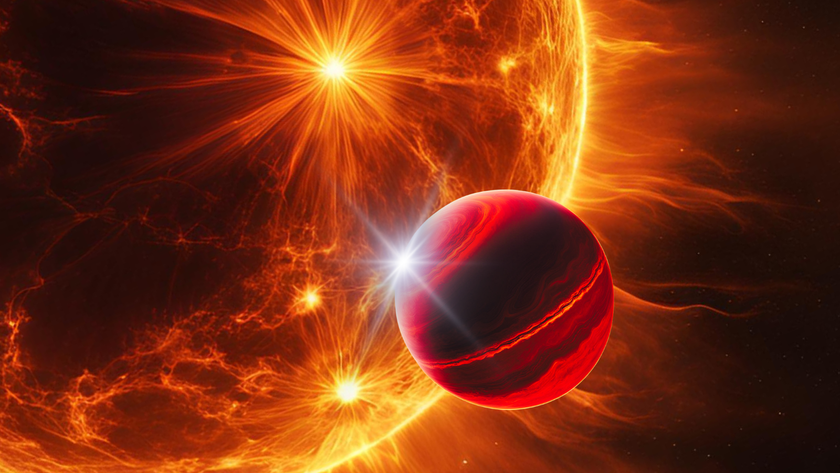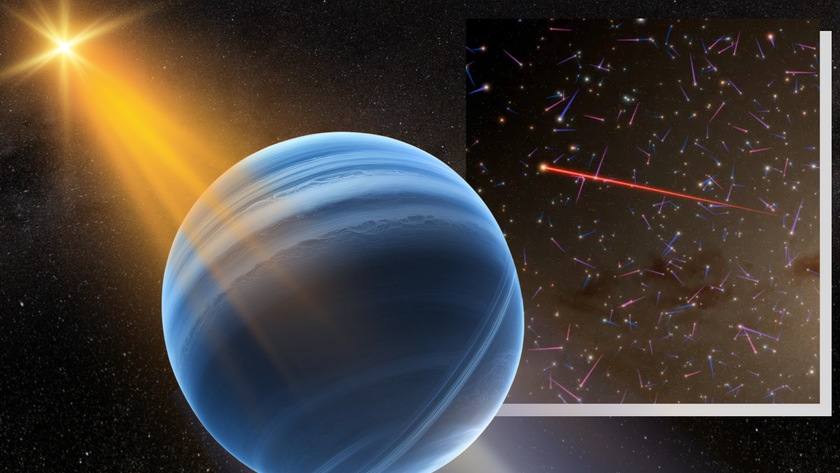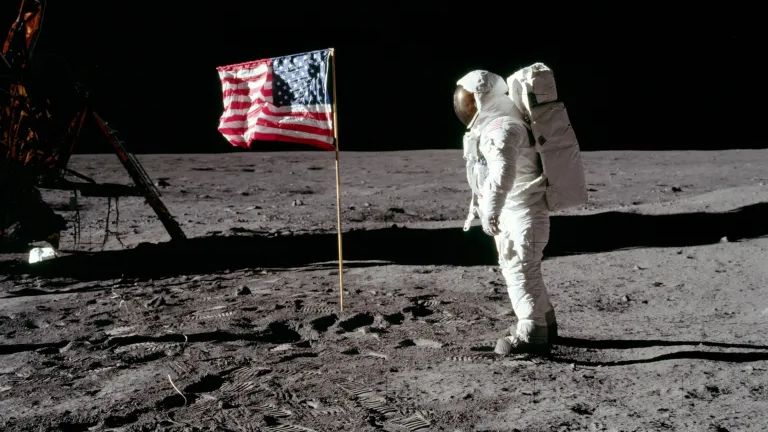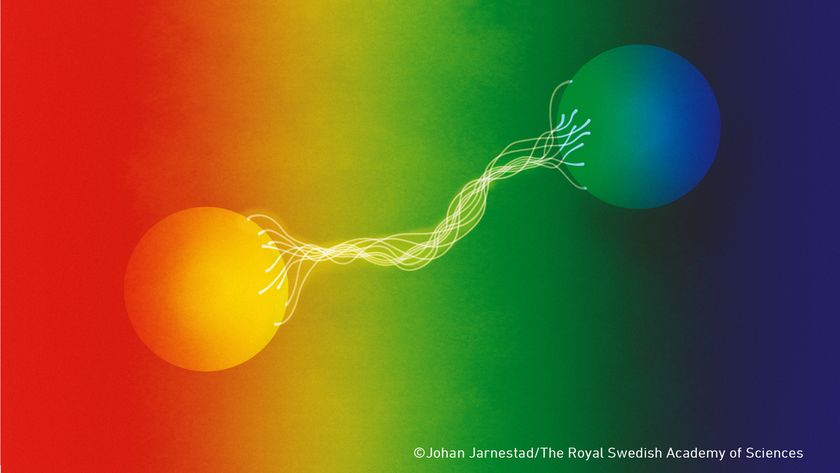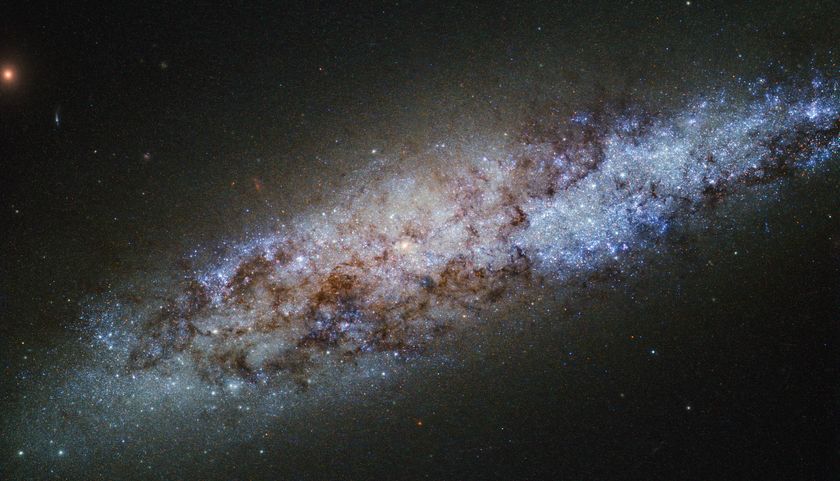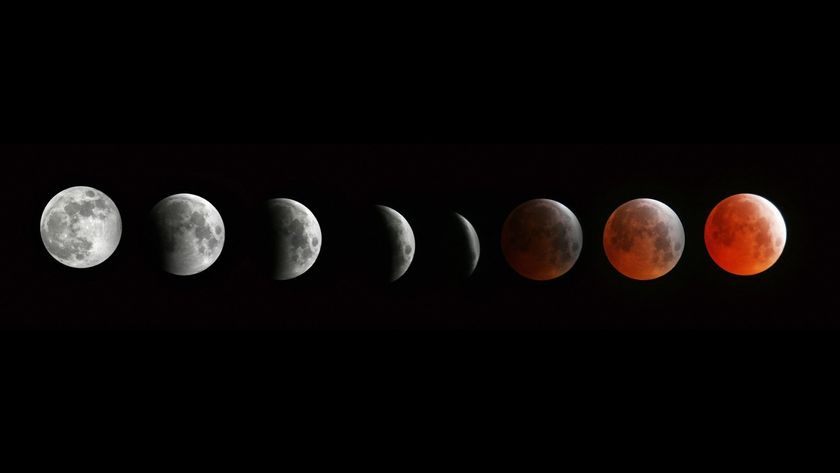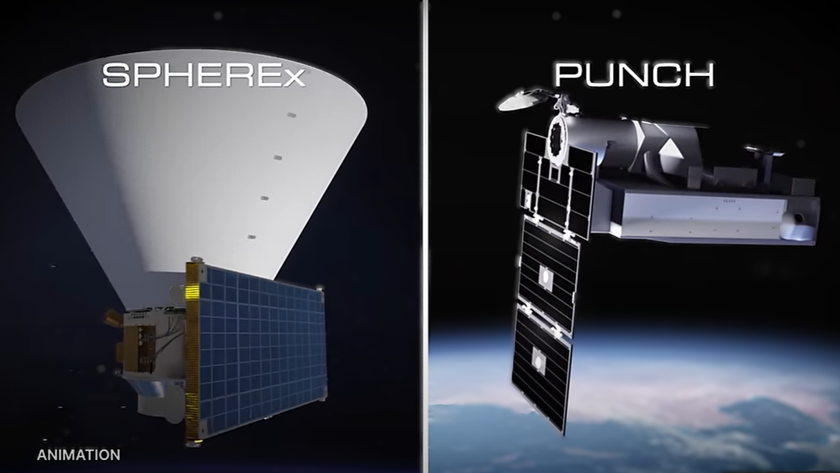Giant planet or 'failed star?' Newfound mystery world blurs the lines
The planet, if it is indeed a planet, is one of the most massive ever detected around a small star.
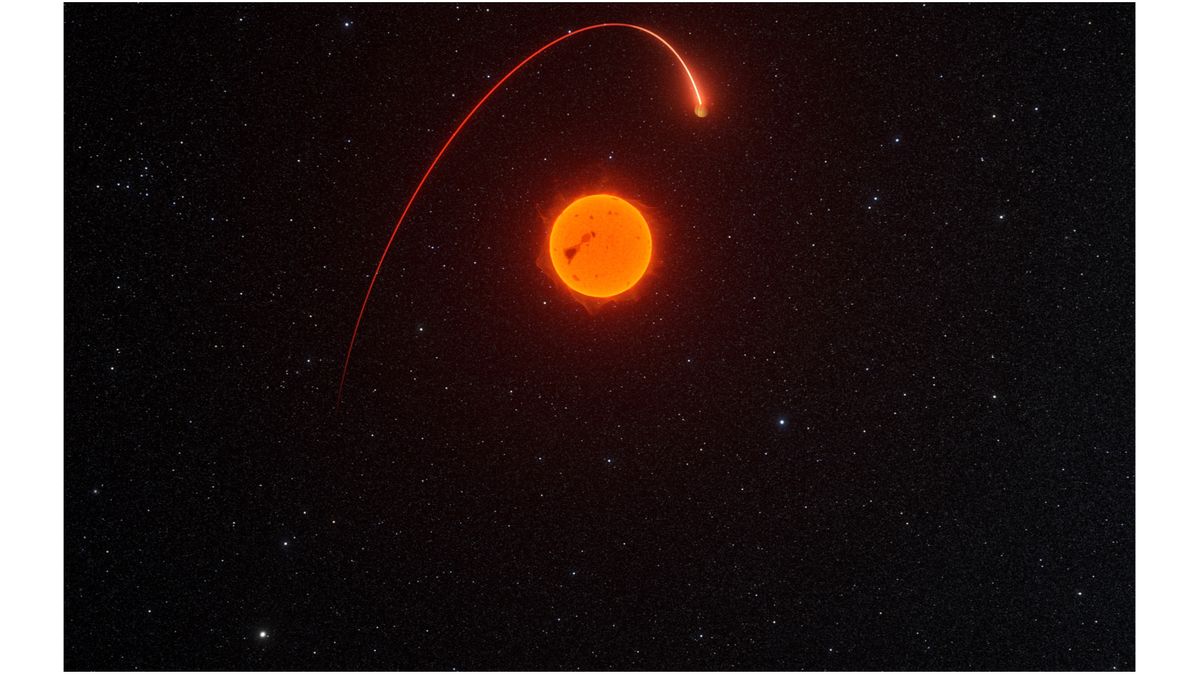
One of the largest exoplanets to be found orbiting a relatively low-mass star has been discovered, thanks to the way the planet's gravity drags its star around on its journey through space.
The planet is the fourth world to be spotted in data from the European Space Agency's Gaia mission, which was designed to map a billion stars in our Milky Way galaxy, cataloguing their masses, luminosities, temperatures and motions through space.
It's this latter property that led to the discovery of the giant exoplanet Gaia-4b. It orbits a star 244 light-years away and is a super-sized gas giant with a mass 11.8 times greater than that of Jupiter.
"With an orbital period of 570 days, it is a relatively cold gas giant planet," said Guðmundur Stefánsson of the University of Amsterdam in a statement. This orbital period places it a little closer to its star than Mars is to the sun, but since its star is less massive and less luminous than ours, Gaia-4b is therefore probably not as warm as Mars.
Related: Exoplanets: Everything you need to know about the worlds beyond our solar system
Yet, by being so massive, Gaia-4b exerts a fierce gravitational pull on its star, an unremarkable orange K-class dwarf with just 64% the mass of our sun. As Gaia plotted the star's proper motion in the sky, it noticed that the star's track through space wobbled slightly, as though being pulled to and fro by something in a kind of corkscrew motion across the sky. Astronomers call this technique of detecting exoplanets the astrometric method because it requires the tracking of a star's position and motion, which is a field known as astrometry.
In fact, Gaia has noticed this wobbling motion for numerous stars, so Stefánsson led a team of astronomers to follow up on these corkscrew systems.
Get the Space.com Newsletter
Breaking space news, the latest updates on rocket launches, skywatching events and more!
"However, the motion of these stars is not necessarily due to a planet," said Stefánsson. "Instead, the star might be a pair of stars that are too close together for Gaia to recognize them as separate objects."
To determine which is the case, Stefánsson's team employed a trio of instruments: the NEID (pronounced ‘nu-id') spectrograph on the WIYN 3.5-meter telescope at Kitt Peak National Observatory in Arizona, as well as the Habitable-zone Planet Finder on the 10-meter Hobby Eberly Telescope at McDonald Observatory in Texas and the FIES spectrograph on the 2.6-meter Nordic Optical Telescope on La Palma in the Canary Islands.
These spectrographs are able to measure the radial velocity of a star — how a star wobbles on its axis as it orbits its center of mass shared with an orbiting companion. The greater the mass of the companion, the greater the radial velocity Doppler shift in the star's light.
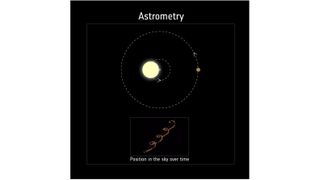
Stefánsson's team had identified 28 candidates in the Gaia data. Of those, 21 were shown to be binary star systems. Five remain inconclusive. One is a star orbited by a brown dwarf — an object that straddles the line between planet and star — now named Gaia-5b, and one turned out to be a planet, Gaia-4b.
Some astronomers might argue, however, that Gaia-4b could also be classed as a brown dwarf; the dividing lines between planet and brown dwarf are murky. Some astronomers define the distinction as depending upon how the object formed. Did it come together through the accretion of rocky material to assemble a giant super-Earth-size core around which humongous amounts of gas wrapped itself, like the formation of Jupiter and Saturn in our solar system? Or did it form like a star, through the gravitational collapse of a gas cloud following the fragmentation of the disk of gas that encircled and fed the main star?
Related: Brown dwarfs: The stars that 'fail'
Other researchers distinguish between planets and brown dwarfs depending upon whether they are able to engage in nuclear fusion reactions of deuterium for a short time (fully fledged stars use hydrogen in their nuclear reactions). But, as Stefánsson's team note, it's not really possible to tell what's going on inside these distant bodies.
A third way is to distinguish between planets and brown dwarfs through their mass. A mass 13 times greater than Jupiter's is usually considered the lower limit for a brown dwarf, but there's a certain arbitrariness to this.
Gaia-5b, which orbits a red dwarf star 134 light-years away from Earth, clocks in at 20.9 times the mass of Jupiter, and so it seems safe to call that object a brown dwarf.
Gaia-4b is more troublesome. Purely by mass, it is categorized as a planet. However, Stefánsson's team looked at the abundance of heavy elements in the central star's composition, finding its chemistry to be pretty similar to that of our sun. Rocky planets, or the rocky cores of giant planets, need a ready supply of heavy elements in order to form. While our sun and Gaia-4 seem to have enough heavy elements to produce Jupiter-mass planets, it seems questionable that an object 11.8 times the mass of Jupiter could form from the available resources. Stefánsson therefore suggested that this points to Gaia-4b having formed from gravitational collapse following disk fragmentation, where some kind of instability effectively broke the disk of gas around the central star.
Does that mean Gaia-4b should really be called a brown dwarf rather than a planet? If we're going to call it a planet, then it is one of the most massive planets found around a lower-mass star — such worlds are rare simply because low-mass star systems don't have lots of extra material available to build giant planets. On the matter of planet or brown dwarf, Stefánsson's team remain open-minded.
Although Gaia shut down in January following 12 years of observations, there are still reams of data to be analysed from the mission. That data is released in big packets; the most recent was Data Release 3 (DR3) in 2022 (and supplemented with additional data in 2023), and DR4 is expected in 2026.
There are "more planets to come as roughly the last year of data is analyzed," said Jayadev Rajagopal, a member of Stefánsson's team at the U.S. National Science Foundation's NOIRLab, in a different statement. "This work is a harbinger of the future where Gaia discoveries of planets and brown dwarfs will need to be confirmed, or rejected, by NEID data."
The first two planets to be discovered by Gaia, Gaia-1b and Gaia-2b, were both found when Gaia detected them transiting their star. The third planet, Gaia-3b, was a little more complicated in that it was detected astrometrically orbiting one of the stars in a binary system. In total, only around 200 planets have thus far been detected via the astrometric method, but with Gaia DR4 on the horizon, and Stefánsson's team on the case, they may soon be joined by many more.
The discovery of Gaia-4b and 5b was reported on Feb. 4 in The Astronomical Journal.
Join our Space Forums to keep talking space on the latest missions, night sky and more! And if you have a news tip, correction or comment, let us know at: community@space.com.

Keith Cooper is a freelance science journalist and editor in the United Kingdom, and has a degree in physics and astrophysics from the University of Manchester. He's the author of "The Contact Paradox: Challenging Our Assumptions in the Search for Extraterrestrial Intelligence" (Bloomsbury Sigma, 2020) and has written articles on astronomy, space, physics and astrobiology for a multitude of magazines and websites.
-
Helio This article makes sense as it holds to the mainstream view, as I understand it, that planets should be assumed to be brown dwarfs when their mass is under about 14x that of Jupiter.Reply
The exoplanet.eu catalog, however, will have many with masses over 25x and some as high as 70x. Mass, however, isn't the key dividing line as the rule since 1999 is whether or not 1/2 of the original deuterium has burned.
The NASA website, IIRC, limits exoplanet masses to about 25x, thus their catalog is notably less in exoplanet number.
I'm curious if I've got the proper handle on this. Do I? -
Classical Motion I was surprised at the distance the star travels between loops. Sol might have an 11 maybe 22 year wobble. Wonder what it looks like at a distance.Reply -
m4n8tpr8b Reply
The mainstream view is that (1) brown dwarfs have masses between 13 and 80 Jupiter masses, (2) brown dwarfs formed by cloud collapse like stars, rather than coalescing from dust in protoplanetary discs like planets, (3) after formation, brown dwarfs had deuterium fusion in their cores for the short period until that deuterium ran out. The article definitely goes beyond that: it makes the point that whether you use cloud collapse or deuterium fusion as the defining quality, the mass limits are murky and there is no easy way to determine if an object fits either definition.Helio said:This article makes sense as it holds to the mainstream view, as I understand it, that planets should be assumed to be brown dwarfs when their mass is under about 14x that of Jupiter.
The part worth to emphasize is that finding signs of either the formation process or the deuterium burning is very difficult, while mass can be determined from spectroscopy, so from a viewpoint of observation and cataloguing, a definition connected to mass is the most useful. (Just for perspective: there is a similar problem in the field of near-Earth objects. From the viewpoint of impact risk, what you would ideally want to know there is the mass of the object. But for most objects, all you have is its total brightness. For such objects, you have to assume an average surface brightness to calculate a diameter, and an average density to calculate mass. So NASA is mandated to find 90% of NEAs larger than 140 m across, but what it does in practice is cataloguing objects brighter than an absolute magnitude of 22.)
That site has a page explaining its inclusion criteria. The criterion is a mass of at most 60 Jupiter masses plus the 1-sigma uncertainty in the object's mass; that is, if an object's mass is determined to be 73±13 Jupiter masses, it will be put on the list. For this 60-Jupiter-mass limit, they cite "Hatzes & Rauer, 2015". You can read the abstract of that paper. This was a study of the mass-density distribution of exoplanets, which found no cutoff at 13 Jupiter masses, only at 60, and the authors argue that this cutoff is the only meaningful distinction. What does this mean for us? It means either that whatever the way of formation and whatever the scale of deuterium fusion at under 60 Jupiter masses, the density of the object (its most easily observable material characteristic) will be the same; or (less likely) that either formation or deuterium fusion only happen at 60 or above.Helio said:The exoplanet.eu catalog, however, will have many with masses over 25x and some as high as 70x. Mass, however, isn't the key dividing line as the rule since 1999 is whether or not 1/2 of the original deuterium has burned.
Yes, the NASA exoplanet catalog has a 25 Jupiter masses cut-off. Indeed the European catalog currently has 7,413 entries while NASA's has only 5,832; but the difference could also be down to access to the databases of different research teams.Helio said:The NASA website, IIRC, limits exoplanet masses to about 25x, thus their catalog is notably less in exoplanet number. -
m4n8tpr8b Reply
You are confusing the solar cycle with the motion around the centre of mass.Classical Motion said:I was surprised at the distance the star travels between loops. Sol might have an 11 maybe 22 year wobble. Wonder what it looks like at a distance.
The 22-year solar cycle is a cycle in the pattern of the Sun's magnetic field, which reverses every 11 years. The most obvious sign of this cycle for us is the number of sunspots, which is highest halfway between the reversals and zero during the reversals, whatever the direction of the magnetic field, thus the cycle in sunspot numbers is half the magnetic cycle, 11 years.
The "wobble" in the article is because the common notion that planets revolve around the Sun is an over-simplification: in truth, all the planets and the Sun revolve around a common centre of gravity, but since the Sun is almost a thousand times heavier than all the planets, that centre of gravity is inside or near the surface of the Sun. So, for example, while Jupiter completes an orbit 778 million kilometres from the centre of mass in 12 years, Sun completes a circle with a 778 thousand km radius, on the opposite side of the centre of mass. Since the planets move at different speeds, the Sun's wobble around the centre of mass is actually a combination of several cycles (of which the Jupiter cycle is by far the largest).
The way astronomers can measure this wobble for other stars is not the motion perpendicular to our line of sight (that's too small to detect) but the one along the line of sight, which can be measured due to the Doppler shift (the shift in the wavelength of lines in the star's spectrum). -
rod Interesting mass reported for Gaia 4b and 5b. The exoplanet.eu site shows 7413 confirmed exos. Mean Jupiter mass is 12.44 Mjup, and max is 74.6 Mjup listed. 4452 exoplanets show mass Mjup property. The NASA archive site, https://exoplanetarchive.ipac.caltech.edu/index.html has some interesting data too.Reply
5832 confirmed with mean mass 2.326 Mjup with 38090 rows and 6330 rows contain mass Mjup. The max is 80 Mjup in the data. The average or mean is 2.325 Mjup. -
Helio Reply
Distances are exaggerated for effect. This scaled illustration may show how their mass ratio, though higher than average, causes little movement of the star, but enough for astronomers.Classical Motion said:I was surprised at the distance the star travels between loops. Sol might have an 11 maybe 22 year wobble. Wonder what it looks like at a distance.
These same mass and distance ratios will balance a seesaw, which is why I like to draw them. ;)
-
Classical Motion Ok, I didn’t realize the “Position in the sky over time” image was an exaggeration. That showed 4 rotations of 570 days. At 244 LY.Reply
I was considering the pitch, not the barycenter. When they said corkscrew, I naturally thought pitch. Not wobble. -
Helio Reply
Great explanations, m4!m4n8tpr8b said:The mainstream view is that (1) brown dwarfs have masses between 13 and 80 Jupiter masses, (2) brown dwarfs formed by cloud collapse like stars, rather than coalescing from dust in protoplanetary discs like planets, (3) after formation, brown dwarfs had deuterium fusion in their cores for the short period until that deuterium ran out. The article definitely goes beyond that: it makes the point that whether you use cloud collapse or deuterium fusion as the defining quality, the mass limits are murky and there is no easy way to determine if an object fits either definition.
Yes, I was surprised when I read about the use of deuterium fusion as a determining factor, adding to my confusion.
Yes. I did find a useful paper that presents the variation in densities based on exo type (ice; silicate; iron). Using this, I'm able to approximate roughly the expected mass or radius if one variable is known, since the semi-major is given and host's luminosity.m4n8tpr8b said:The part worth to emphasize is that finding signs of either the formation process or the deuterium burning is very difficult, while mass can be determined from spectroscopy, so from a viewpoint of observation and cataloguing, a definition connected to mass is the most useful. (Just for perspective: there is a similar problem in the field of near-Earth objects. From the viewpoint of impact risk, what you would ideally want to know there is the mass of the object. But for most objects, all you have is its total brightness. For such objects, you have to assume an average surface brightness to calculate a diameter, and an average density to calculate mass.
The paper you site really makes your argument stick! Their Fig. 1 I would recommend as one of the best inverts in astronomy graphs! :) I was surprised, yet with a little thought, it is intuitive, nevertheless.
I like the NASA approach since brown dwarfs are not likely candidates for habitability. But they may have moons that do offer habitability of some kind, so I prefer using the eu catalog. I also calculate the no. of possible exos that might be candidates in having exomoons of interest. Exoplanet Stats ]m4n8tpr8b said:Yes, the NASA exoplanet catalog has a 25 Jupiter masses cut-off. Indeed the European catalog currently has 7,413 entries while NASA's has only 5,832; but the difference could also be down to access to the databases of different research teams.
Also, my little exoplanet program allows the user to set limits. I use 25 jupiters as the mass limit to better define habitable planets.
Thanks again for your help. -
Unclear Engineer Being a little picky, here, but would a "brown dwarf" have "moons" or "planets" if it is orbited by something smaller than itself?Reply
And, if brown dwarfs do have satellites of some sort, would they be useful in understanding how protoplanetary nebula actually evolve, considering that their nebula would not have had the same radiation pressure and heating of one that surrounds a star that actually ignited the mainstream hydrogen fusion processes? -
Catastrophe Google gives:Reply
A "satellite" of a brown dwarf would essentially be a moon orbiting around it, though currently, no confirmed moons have been directly observed around brown dwarfs; however, the concept is theoretically possible and astronomers are actively searching for them, with some evidence suggesting the potential for moons around certain brown dwarfs, like Gliese 229B, which was initially thought to be a single object but was later discovered to be a binary system of brown dwarfs themselves.
Due to their small size and the faintness of brown dwarfs, directly observing a moon around a brown dwarf is extremely challenging with current technology.
Moons orbiting brown dwarfs might experience extreme temperature fluctuations and harsh radiation conditions depending on their proximity to the brown dwarf.
Cat :)
